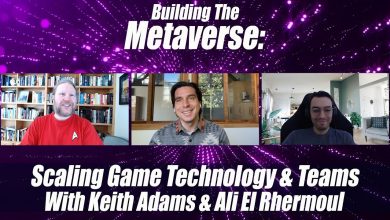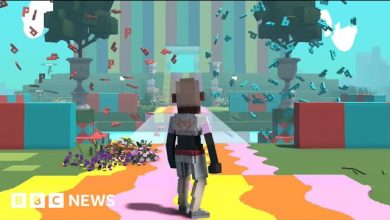Into the Eduverse – Challenges and Opportunities
Challenges and opportunities for the Eduverse, the Metaverse for Education.
In this video Stephen Reid from Microsoft, Ian Stuart from Avantis Education and educators from around the world discuss the challenges and opportunities around the Eduverse, the metaverse for education.
Before summarizing the video let’s talk about what is the Eduverse and Metaverse, and how does it work?
What is the Metaverse?
Eduverse is a web3 virtual environment where educators can choose their own adventure, connect as avatars, learn and earn NFTs, trade contents, find jobs, explore resources and earn tokens.
What is the Metaverse for Education?
Metaverse is a 3D virtual world where you can meet, play, work and interact with others via digital avatars. In the metaverse, people can do things that they do in their real life, whether it’s going to the mall, attending a concert or buying virtual clothing.
People can also socialize with other people, hold work meetings, among other things. Metaverse presents an opportunity for students to have the experience of being in a class without physically leaving their country of residence.
Metaverse will allow students to have an increasingly “cyber-physical” university experience, where the virtual world merges with the real. Many students have experienced the same thing. The Metaverse can change the way education and academic work are monetized.
How does the Metaverse work?
According to Unicef, the education of 91% of students worldwide was disrupted by the coronavirus pandemic. Since early 2020, both students and teachers have had to adapt to a new, remote style of learning. Technology has been crucial to the continuation of learning throughout the global lockdowns.
And now tech experts and educators alike are wondering the same thing: if the internet is beneficial to learning in its current state, what kinds of things could we do with the metaverse?
The Metaverse can promote education by:
- Virtual Learning
- Stimulating Real-Life Situations
- Participating in virtual campus activities
Video Summary
Stephen Raid, the first speaker, is from Microsoft and his expertise is in technology and game-based learning. He has used about 140 games to help children learn through gaming.
According to Stephen there are three pillars of game-based learning. The first pillar is an explicit curriculum through which children can have access to science, art, geography, history etc. The second pillar is social and emotional learning which helps children to develop their capacity as human beings. The third pillar is career readiness which helps children to explore their career options.
By using game-based learning children are taught in school important topics like gender equality, refugee crisis, climate change, civil rights etc. There are two types of curriculum for children in school. The first one is an explicit curriculum which must be taught by the teachers and they have to assess the teaching at the end of year of school. The other one is an implicit curriculum which teachers are not bound to teach the children but if they teach these curriculum, it will contribute to developing the moral of children.
In Scotland Stephen was involved in the Pave Project. It was an alternative vocational education program for young offenders. At this program the teachers used digital platforms like Minecraft to teach the children about various topics. Minecraft is a virtual game-based learning platform that promotes creativity, collaboration and problem solving in an immersive digital environment. Game-based learning is a blessing for children from working class families.
Due to their financial restraint, they cannot afford to often go to the beach, hills or the zoo. Through these virtual games they can experience what it feels like to go to these places without actually being there. Thus, by using game-based learning educators bring abstract concepts to life. Educators also teach children emotional vocabulary for writing.
Stephen was also involved in another project named the 100,000 trees project in France. The purpose of this project was to teach children the importance of trees in the environment, to teach them how to maintain and plant trees to reduce global warming and climate change.
They were taught about biodiversity and interaction between humans and plants. At this program the educators created fake scenarios to help children see the wider picture then they observed their reactions and make them feel what it is like to be in that situation.
For example, to teach children the concept of refugee crisis, educators created fake BBC reports where they wrote that their country is under invasion and they have to flee their houses and have shelter in some other countries. Then they let the children find a solution to this crisis. By using this method children learned empathy and critical analysis of a crisis.
According to Stephen, because of the current systematic pressure in the grading system, children are not taught empathy and analysis and for this they often cannot understand the gravity of a crisis. When they will feel empathy, they will learn about the concepts themselves.
By using Metaverse classroom educators have seen drastic change in the teaching system. Children learn more efficiently through these digital platforms and most important is they are really interested to learn about new concepts.
The Metaverse permits an immersive experience into the digital classroom environment where students will be able to interact with the learning content. Thus, it provides users with an empowered learning experience. The experiences in the metaverse space are limited only by one’s imagination.
This digital platform has been recently used in Korea. By using these digital platforms educators make the children problem solvers and creators for real world problems. They are also triggered through empathy to believe in that problem and find an effective solution and will break the barrier.
To make the education system effective the teachers training colleges and organization should be monitored and the educators must be experts in Metaverse education. Educators can collectively change the education system and enhance learning by using Metaverse education.
Video Timeline
0:00 – Intro
2:00 – Pillars of Eduverse
11:33 – Virtual Reality in Education
22:30 – Using Digital Platform for Education
35:00 – Role of Metaverse in Education
48:00 – Q&A
55:00 – Outro



